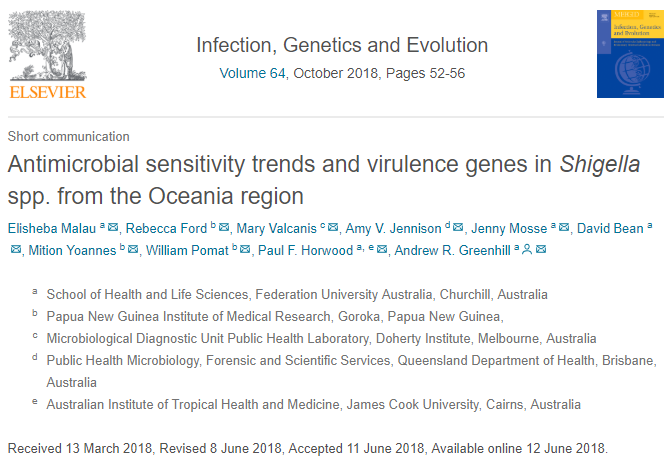Shigella is a common cause of diarrhoea in Papua New Guinea (PNG) and other Oceania countries. However, little is known about the strains causing infection. Archived Shigella isolates (n = 72) were obtained from research laboratories in PNG and reference laboratories in Australia. Shigella virulence genes were detected by PCR, and antimicrobial susceptibility was determined by disk diffusion. The ipaH virulence gene was present in all 72 isolates. The prevalence of other virulence genes was variable, with ial, invE, ipaBCD, sen/ospD3and virF present in 60% of isolates and set1A and set1B genes present in 42% of isolates. Most S. flexneri isolates contained genes encoding enterotoxin 1 and/or enterotoxin 2. Resistance to antibiotics was common, with 51/72 isolates resistant to 2–4 antimicrobials. A greater proportion of bacteria isolated since 2010 (relative to pre-2010 isolates) were resistant to commonly used antibiotics such as ampicillin, chloramphenicol, tetracycline, and trimethoprim-sulfamethoxazole; suggesting that antimicrobial resistance (AMR) in Shigella is increasing over time in the Oceania region. There is a need for improved knowledge regarding Shigella circulation in the Oceania region and further monitoring of AMR patterns.
To read full article click here



